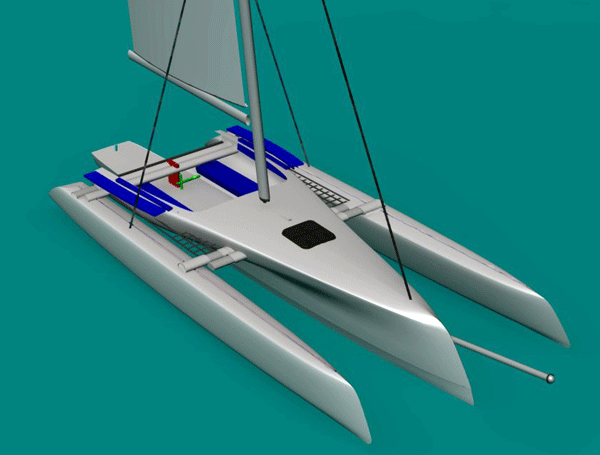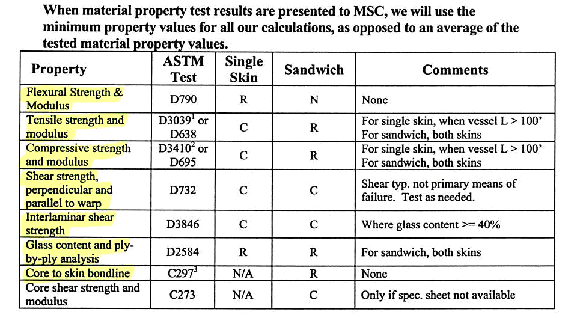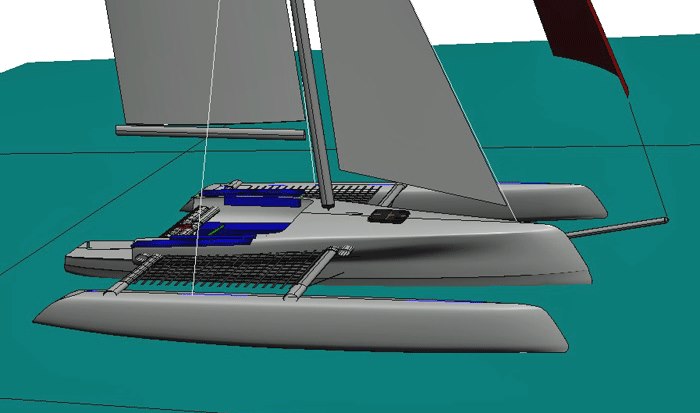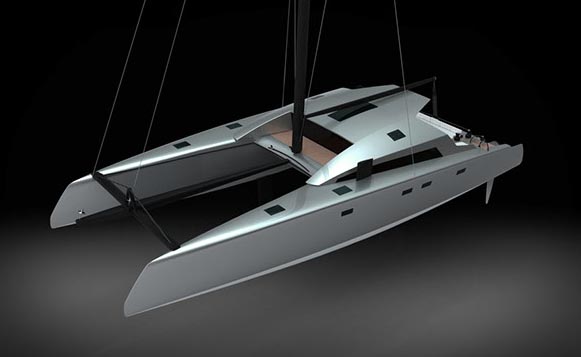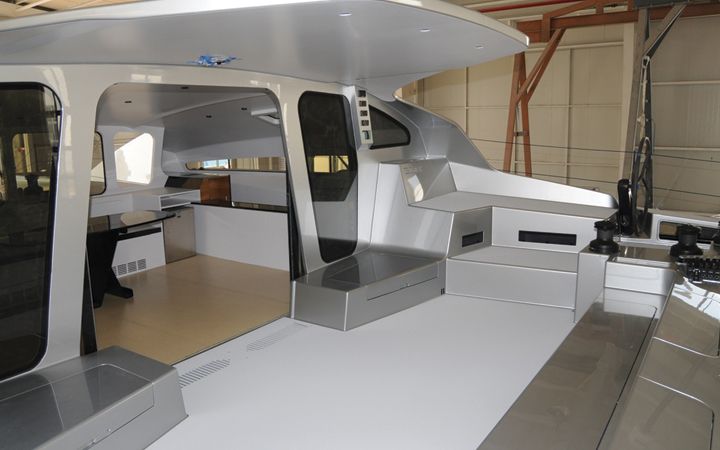Catamarans and Waves
As I have noted before, the accident last November involving that poorly designed and narrow catamaran turned over by a wave seems to have now involved us all as multihull designers.
I was ordered, as I assume all other cat designers were, to create extensive static hydrostatic data at every possible and even impossible state of immersion. I even had to subcontract out GHS studies that could not be done with Prolines. Not one bit of the data shed any light on catamaran stability in waves. As my friend and naval architecture wunderkind Eric Sponberg wrote to me “I agree with you that running extensive hydrostatics doesn’t tell anyone anything” as to why a catamaran rolled over.
But the Coast Guard could and did order me to do that with the same tone of voice that the State Patrol uses when they order you out of the car.
I have heard it said that when a bureaucracy has no tools to deal with a crisis, they will rely on a blizzard of data. I seem to be seeing that.
I would have thought that they would have asked me or Roger or anyone else who has done a few dozen USCG certified cat designs what we thought. Not a word. Instead it was guns drawn and “you will comply”.
Eric recommended “For a better understanding of capsizing, the USCG should refer to C.A. Marchaj’s book “Seaworthiness–The Forgotten Factor”. It at least discusses the nature of capsizing, including catamarans.” I’m sure it was not done.
Actually there is a body of work that applied directly to this incident. Back in the ‘90s when I was in Tasmania, I had discussions with the late Lock Crowther on this very topic. He is the only one I know of who had done extensive tank testing on catamarans in large beam-on waves. The following is what I recall. I think it was published in Multihulls, but I have no idea what issue.
He explained that as the wave hits the first hull, that hull is of course flipped up in the air.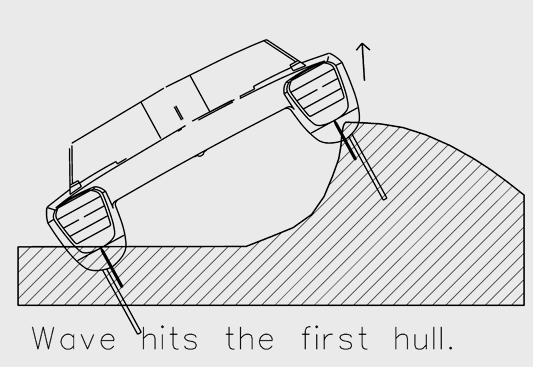
Then the wave charges along toward the next hull. During this time, the first hull stops moving up. When the wave hits the second hull, it is also flipped up. The first hull however has started going back down. 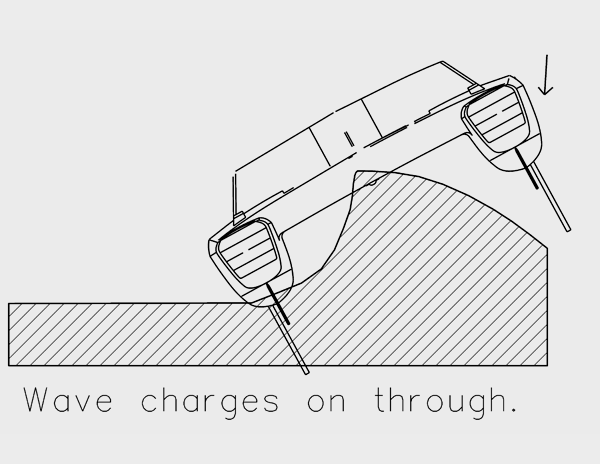
The wave hitting the second hull slams the first one back down and moves on. The wide cat remains flat on the water.
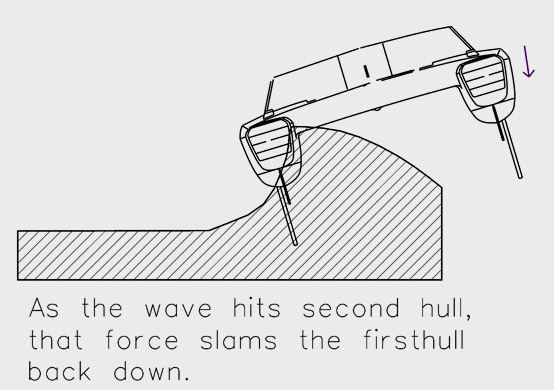
As far as I know, Lock did not study very narrow cats. As I often say, I can tell you what works. I can’t always tell you how bad something done wrong will be. So a wave hits a narrow cat beam on.
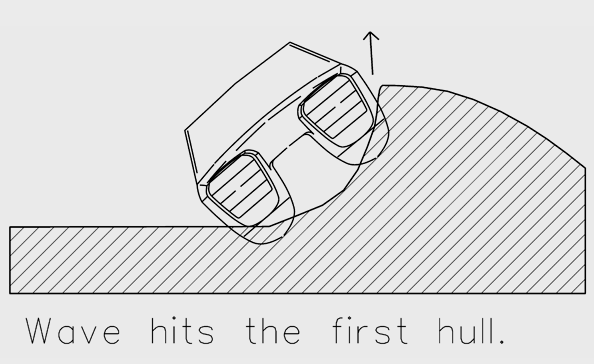
Ok that same size wave looks unfair to compare to. Lets give it a wave 25% smaller so it looks more fair. OK, smaller wave. But the first hull keeps going up.
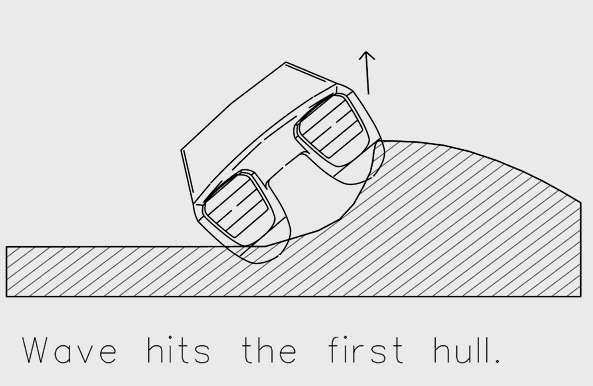
I have a theory that the relevant factors are first, a relationship between wave height and center to center of hulls. Of course a small distance between hulls will cause a cat to get rolled in smaller waves.
I also see a critical relationship between wave speed and distance between hulls.
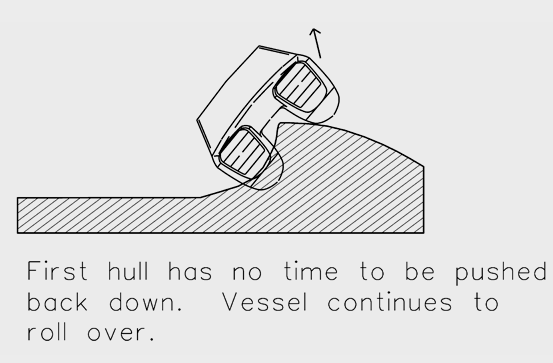
My theory is that with the narrow cats, the first hull never gets a chance to start to fall back down again. The wave it trapped between them as the first hull is still going up.
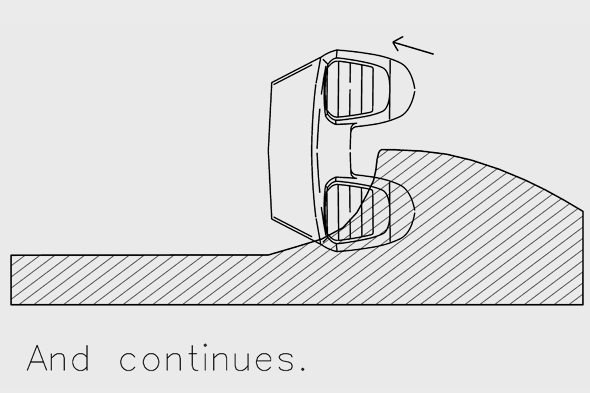
This could be a very useful thesis study for some student. I recall that Lock found that trimarans of the day behaved like the narrow cat above.
I believe it would have been smarter for the USCG to ask if any of us knew anything about this topic before going thug on us to help them generate a ream of useless data.
